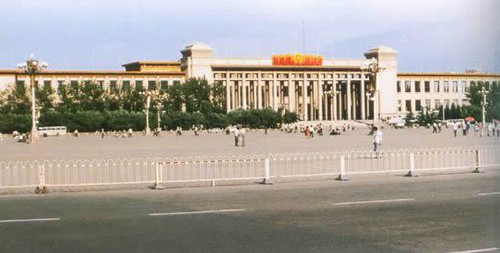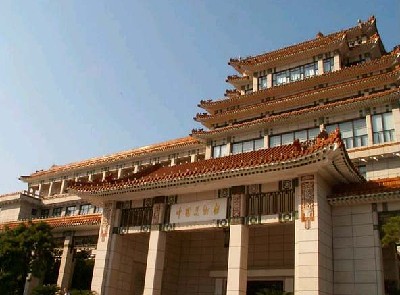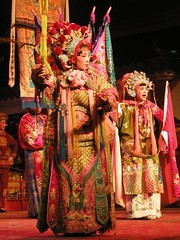| Home > Living in China > Traditional Chinese Medicine |
Some Methods of Chinese Treatment
The following methods are considered to be part of Chinese medicine:
 |
|
How ancient Tui-na works |
2.Auriculotherapy, which comes under the heading of Acupuncture and Moxibustion.
3.Chinese food therapy or Dietetics: Dietary recommendations are usually made according to the patient's individual condition in relation to TCM theory. The "five flavors" (an important aspect of Chinese herbalism as well) indicate what function various types of food play in the body. A balanced diet, which leads to health, is when the five functional flavors are in balance. When one is diseased (and therefore unbalanced), certain foods and herbs are prescribed to restore balance to the body.
4.Chinese herbal medicine: In China, herbal medicine is considered as the primary therapeutic modality of internal medicine. Of the approximately 500 Chinese herbs that are in use today, 250 or so are very commonly used. Rather than being prescribed individually, single herbs are combined into formulas that are designed to adapt to the specific needs of individual patients. An herbal formula can contain anywhere from 3 to 25 herbs. As with diet therapy, each herb has one or more of the five flavors/functions and one of five "temperatures" ("Qi") (hot, warm, neutral, cool, cold). After the herbalist determines the energetic temperature and functional state of the patient's body, he or she prescribes a mixture of herbs tailored to balance disharmony.
5.Cupping: A type of Chinese massage, cupping consists of placing several glass "cups" (open spheres) on the body. A match is lit and placed inside the cup and then removed before placing the cup against the skin. The resulting effect is the burning of oxygen within the cup, creating a relative vacuum that allows the cup to stick to the skin via suction. When combined with massage oil, the cups can be slid around the back, offering what some practitioners think of as a reverse-pressure massage.
6.Die-da or Tieh Ta is usually practiced by martial artists who know aspects of Chinese medicine that apply to the treatment of trauma and injuries such as bone fractures, sprains, and bruises. Some of these specialists may also use or recommend other disciplines of Chinese medical therapies (or Western medicine in modern times) if serious injury is involved. Such practice of bone-setting is not common in the West.
7.Gua Sha
8.Moxibustion: "Moxa," often used in conjunction with acupuncture, consists in burning of dried Chinese mugwort on acupoints. "Direct Moxa" involves the pinching of clumps of the herb into cones that are placed on acupoints and lit until warm. Typically the burning cone is removed before burning the skin and is thought, after repeated use, to warm the body and increase circulation. Moxa can also be rolled into a cigar-shaped tube, lit, and held over an acupuncture point, or rolled into a ball and stuck onto the back end of an inserted needle for warming effect.
9.Physical Qigong exercises such as Tai chi chuan (Taijiquan), Standing Meditation, Yoga, Brocade BaDuanJin exercises and other Chinese martial arts.
10.Qigong and related breathing and meditation exercise.
11.Tui na massage: a form of massage akin to acupressure (from which shiatsu evolved). Oriental massage is typically administered with the patient fully clothed, without the application of grease or oils. Choreography often involves thumb presses, rubbing, percussion, and stretches.
12.Some TCM doctors may also utilize esoteric methods that incorporate or reflect personal beliefs or specializations such as Fengshui1or astrology.
Source: wikipedia
Art
 more
moreA Brief Look at China National
Main gate of China National Museum

China’s National Museum will Open
China's National Museum, under expansion for nearly two years, will

Magic Face Change is Soul of
Sichuan Opera, ChengduSichuan Opera (Chuan

Customs
 more
more



 print
print  email
email  Favorite
Favorite  Transtlate
Transtlate 
